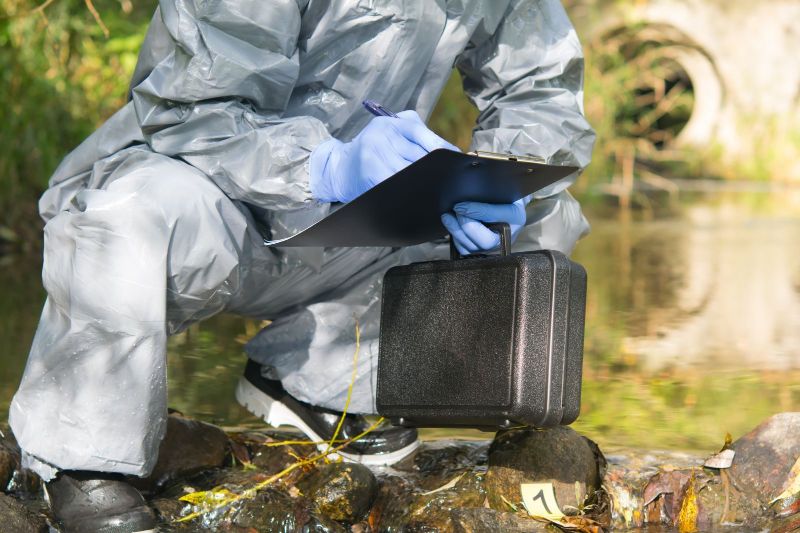 February 23rd, 2024
February 23rd, 2024
Trauma Scene Cleanup: Restoring Safety, Peace, and Normalcy
In the aftermath of a traumatic event, the scene left behind can be overwhelming and distressing. Whether it's a crime scene, accident, or other traumatic incident, the need for cleanup extends beyond the physical. Trauma scene cleanup professionals play a crucial role in restoring safety, peace, and normalcy to affected individuals and communities. In this blog post, we delve into the importance of trauma scene cleanup and the comprehensive process of restoring spaces after a traumatic event.
- The Impact of Traumatic Events: Beyond the Physical Scene:
Traumatic events leave a lasting impact not only on the individuals involved but also on the physical spaces where they occur. Crime scenes, accidents, and unattended deaths often leave behind biohazards, bodily fluids, and other dangerous materials that require specialized attention. The emotional toll on those affected is equally significant, necessitating a thorough and compassionate cleanup process.
- Professionalism and Compassion: The Core of Trauma Scene Cleanup:
Trauma scene cleanup goes beyond traditional cleaning services. It requires a delicate balance of professionalism and compassion. Cleanup professionals understand the sensitivity of the situation and approach their work with empathy, ensuring that those affected are treated with respect and dignity throughout the process.
- Biohazard Cleanup: Mitigating Health Risks:
Traumatic events often involve the release of biohazards, including blood, bodily fluids, and other potentially infectious materials. Cleanup specialists equipped with personal protective equipment (PPE) follow strict protocols to safely and thoroughly clean and sanitize affected areas. The goal is to mitigate health risks and prevent the spread of pathogens.
- Odor Removal: Addressing Lingering Effects:
The odors associated with traumatic events can linger long after the physical cleanup is complete. Trauma scene cleanup professionals employ advanced techniques, such as ozone treatment and thermal fogging, to neutralize and remove lingering odors. Creating a clean and odor-free environment is essential for the well-being of those returning to the space.
- Removal of Contaminated Materials: Ensuring Complete Cleanup:
Contaminated materials, including biohazardous waste, must be carefully removed and disposed of in compliance with local regulations. Trauma scene cleanup teams manage the safe removal of contaminated materials, preventing further health risks and ensuring that affected spaces are thoroughly sanitized.
- Forensic Cleanup: Addressing Crime Scene Residue:
Crime scenes often require specialized forensic cleanup to address the residues left behind by law enforcement investigations. Cleanup professionals work closely with forensic experts to ensure that all traces of evidence-gathering substances are safely and thoroughly removed, allowing the space to be restored to its pre-incident state.
- Coordination with Authorities and Investigations: A Collaborative Approach:
Trauma scene cleanup is a collaborative process that involves coordination with law enforcement, emergency responders, and other relevant authorities. Cleanup professionals respect the legal and investigative aspects of the situation, working in tandem with authorities to ensure that the cleanup process does not compromise ongoing investigations.
- Mental Health Support: Beyond the Physical Cleanup:
Trauma scene cleanup professionals recognize the mental health impact of traumatic events on those affected. Some companies provide resources and support to connect individuals with mental health professionals or counseling services. This holistic approach acknowledges the emotional toll of trauma and aims to support individuals on their journey to healing.
- Restoration of the Physical Space: Rebuilding Lives and Communities:
Beyond cleanup, trauma scene restoration involves repairing and restoring the physical space. This may include structural repairs, repainting, and other necessary renovations. The goal is to create an environment that fosters a sense of normalcy, safety, and peace for those returning to the space.
- Community Outreach and Education: Fostering Resilience:
Trauma scene cleanup professionals often engage in community outreach and education initiatives. These efforts aim to raise awareness about trauma scene cleanup services, provide information on preventive measures, and offer support to communities in the aftermath of traumatic events. By fostering resilience and awareness, these professionals contribute to the overall well-being of communities.
Case Study:
Consider a traumatic event in a residential neighborhood. Trauma scene cleanup professionals quickly mobilize, working closely with law enforcement to ensure a thorough and respectful cleanup process. Through the removal of biohazards, forensic cleanup, and restoration efforts, the neighborhood is gradually transformed. The community is informed about available mental health resources, and the collaborative efforts contribute to healing and rebuilding lives.
Trauma scene cleanup is a vital service that goes beyond physical cleaning; it involves restoring safety, peace, and normalcy to those affected by traumatic events. The compassion, professionalism, and expertise of cleanup professionals are essential elements in helping individuals and communities navigate the difficult journey from trauma to recovery. By addressing the physical and emotional aspects of trauma scene cleanup, these professionals play a pivotal role in supporting the healing process and rebuilding lives after the darkest moments.
